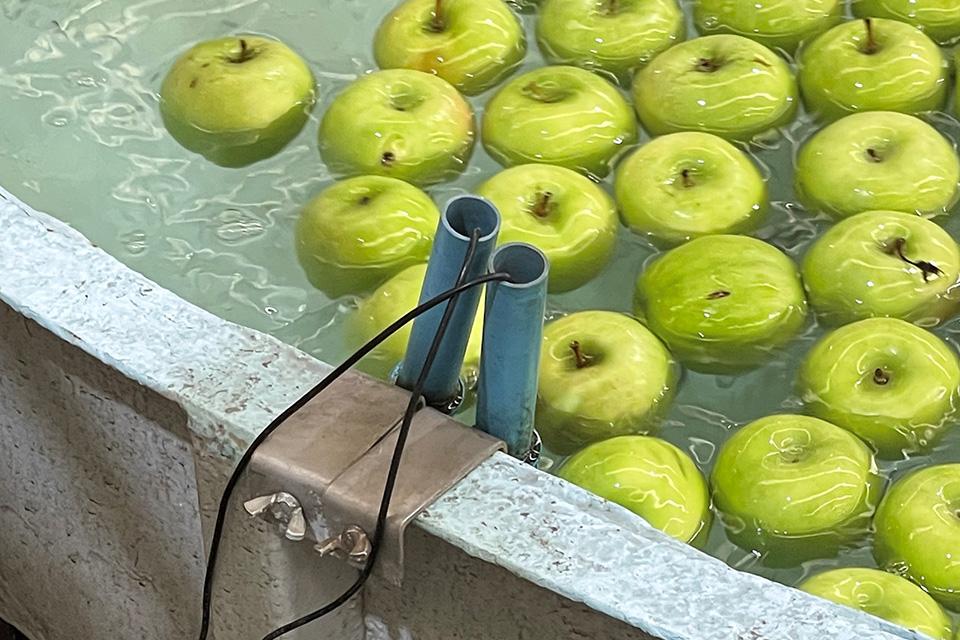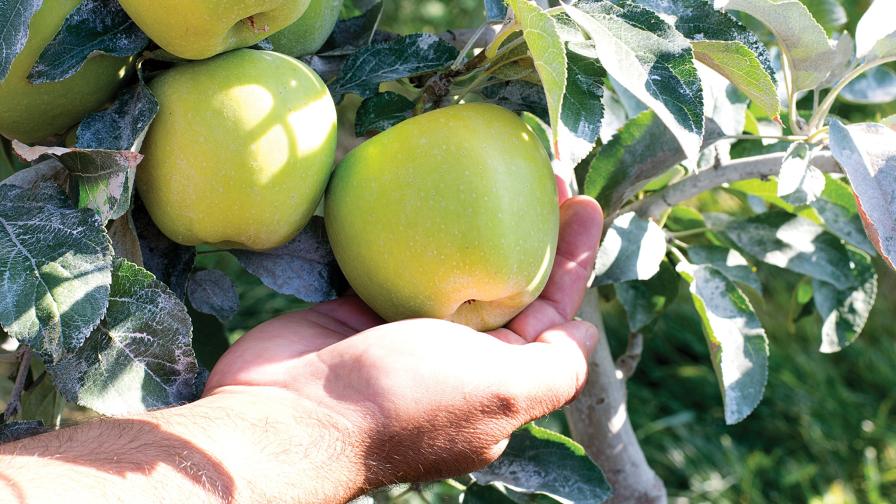Postharvest Water Management: Why This Doesn’t Have To Be So Difficult

Postharvest water management explained: Placement of pH and antimicrobial monitoring sensors well separated from supply and return ends of the postharvest wash and conveyance system is not reflective of known best management practices.
Photo by Trevor Suslow
I am not one to dwell in the past and have always tried to be forward- and future-thinking while remaining continually mindful of where we HAVE come from and the cycles of learning in research and commercial practice. I am also not one for waxing nostalgic about my professional career and stepping onto any “retirement swan song” soap box.
However, in recently continuing to clean out and clear out my office and lab at University of California, Davis, I was really struck by how many topics in preharvest to postharvest quality and safety across the full supply chain — reaching back to my 15 years in the ag-biotech industry sector pre-UCD — and it was almost all going into the dumpster! It was a stark reality to digitize and save only about 2% of more than 8,000 35mm slides, multiple binders, reports, etc., etc. There is no institutional hand-off, and I am definitely not hauling this to our new home in Oregon.
But what really hit me hard during these past several weeks were all the applied research efforts, all the workshop materials, all the Extension and grower training materials, and all the industry outreach content that covered the same challenges in performance and industry execution gaps I see today.
Some of this includes topics being funded today to address the very same research areas problematic for the industry 38 years ago. One of these areas is postharvest water management. To me this is much more an issue of not applying what we know, especially over the past 10 years of excellent research into the critical process controls, better defined monitoring systems, and preparing for new regulatory-compliance verification protocols.
This is particularly relevant in 2023 as the postharvest water provisions under the Food Safety Modernization Act Produce Safety Rule (FSMA) are now in full enforcement mode. The details for both domestic and imported “covered” produce may be found here: Requirements for Harvest and Post-Harvest Agricultural Water in Subpart E for Covered Produce Other than Sprouts, End of Intended Enforcement Discretion Beginning January 26, 2023.
A key concern I hear from the regulated community and Extension educators is that so many of the requirements are highly subjective, and controversies surrounding compliance with inspectors have already been experienced. For high-level background:
THE PARAMETERS
FSMA Produce Safety Rule (PSR) does not require growers or packers to wash produce.
The PSR requires visual monitoring of water quality including working out a process-specific turbidity management standard operating procedure (turbidity seems to be a simple and practical parameter, but it is actually much more complex than that), managing water temperature appropriate to the commodity where extended immersion is involved due to the potential for uptake and internalization, and overall maintaining safe and adequate sanitary water quality.
ENFORCEABLE REQUIREMENT HIGHLIGHTS
Briefly, all postharvest source water must not have any detectable generic E. coli per 100 ml of analyzed sample. (My opinion — this is not a prudent or sensible indicator of initial postharvest water quality and firms should consider using non-detect for Total Coliform, which would include E. coli as a better metric).
You must establish a freshwater change or exchange schedule for recirculated water, which minimizes the potential for product adulteration.
You must visually monitor water for buildup of organic material, which may negatively impact water quality management.
If antimicrobials are used to maintain water quality, these must be approved and labeled for use in the relevant process systems.
AVAILABLE RESOURCES
There are a number of resources available across land-grant university Extension, industry, and trade associations, very credible affiliated technology and service industries, and the research reports found at the CenterForProduceSafety.org and at Cals.Cornell.edu/produce-safety-alliance, which also includes a Searchable Database AND Resource Tool for Labeled Sanitizers for Produce.
In addition, there is a Tutorial video on How to Search Efficiently at YouTube.com/watch?v=wNNJOeITtxU.










